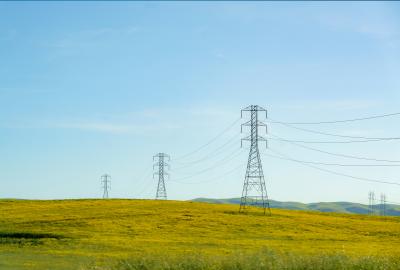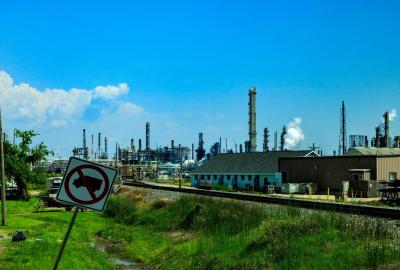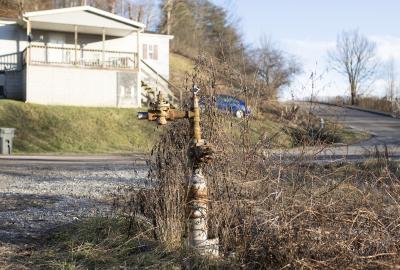Hurricanes’ hidden risk: toxic chemicals
When a hurricane hits, for some, the worry isn’t just about the winds and flooding — it’s also toxic chemicals in the air and water.
Update October 1, 2024: Hundreds of industrial facilities across the Southeast, including paper mills, oil and gas storage facilities and a nuclear power plant, were recently flooded by Hurricane Helene. As with Hurricane Harvey and other storms, information about chemical spills and releases may take weeks to reach the public. Read on to learn more about risks and solutions.
Update July 8, 2024: More than 2 million people lost power as Hurricane Beryl swept into southeast Texas. Some refineries near Houston have already started reporting toxic chemical pollution releases related to the storm.
Hurricane Harvey’s torrential rains dumped so much water on Houston in 2017 that the earth’s crust sank almost an inch under the city. In addition to killing 36 people and damaging more than 150,000 homes in the area, the storm created a more insidious threat — a toxic wave of pollution. Dark smoke and flames spewed out of malfunctioning petrochemical plants and other industrial facilities; oil and gas spilled out of ruptured storage tanks at refineries.
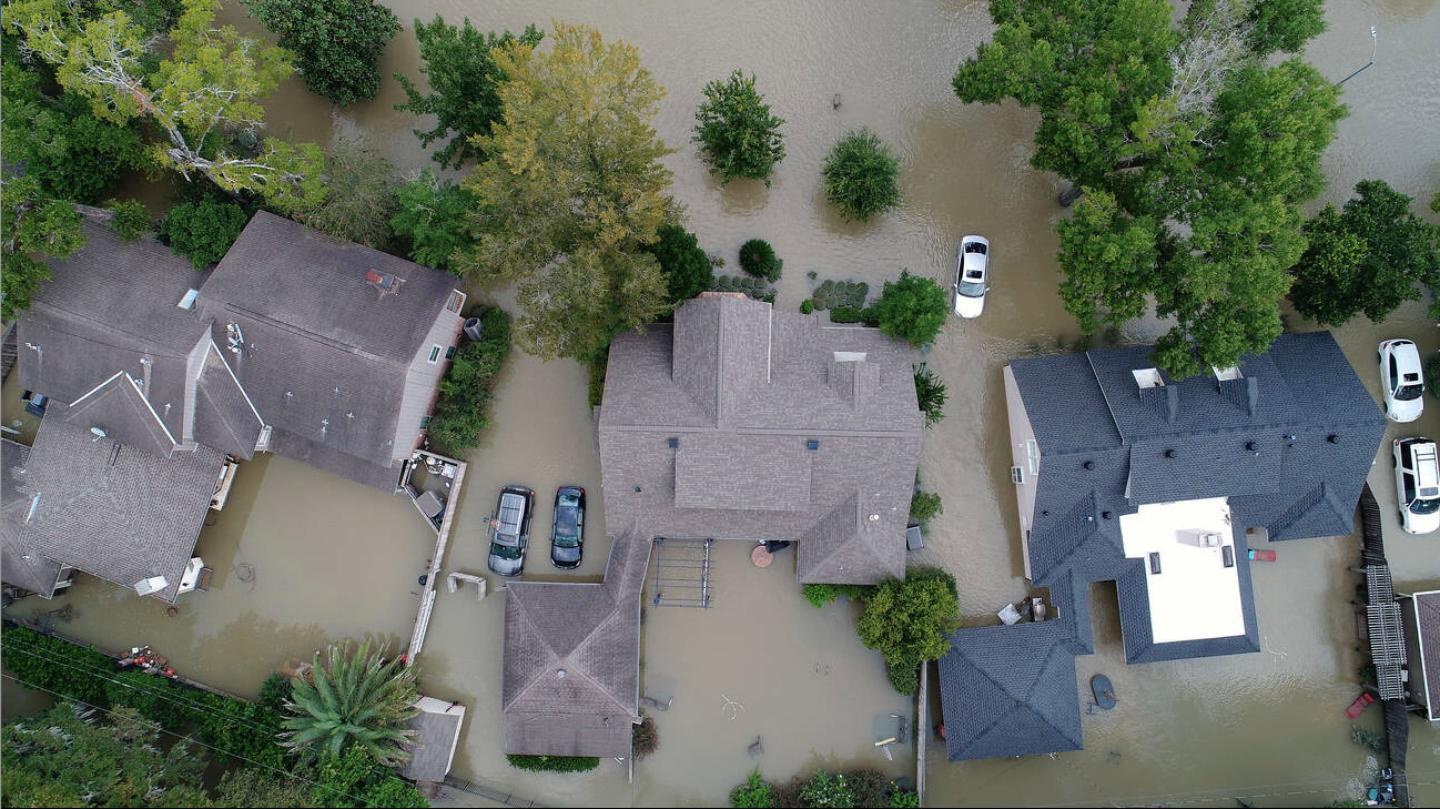
In Galena Park, just east of Houston, residents reported gasoline odors so strong their eyes watered; some swam to safety through oily, black water that smelled like a “rotten sewer,” reported the AP.
This year, even as some Houstonians are still rebuilding after Harvey, another dangerously active hurricane season is approaching. Forecasters predict 8-13 hurricanes and an 80% chance of a named storm approaching Texas. As climate change drives more frequent and severe weather events, it compounds the risk of toxic accidents in a region that already sees a fire, explosion, spill or leak nearly every month.
Hurricanes and petrochemicals: Houston’s double-whammy
The Houston Ship Channel, a 52-mile-long canal linking the Gulf of Mexico to the Port of Houston, is lined with some 500 chemical plants, 10 refineries and more than 6,670 miles of intertwined oil, gas and chemical pipelines.
The industry and the channel developed together, often near communities of color or low wealth — a result of a lack of zoning laws and a legacy of environmental racism, including discriminatory real estate policies and practices.
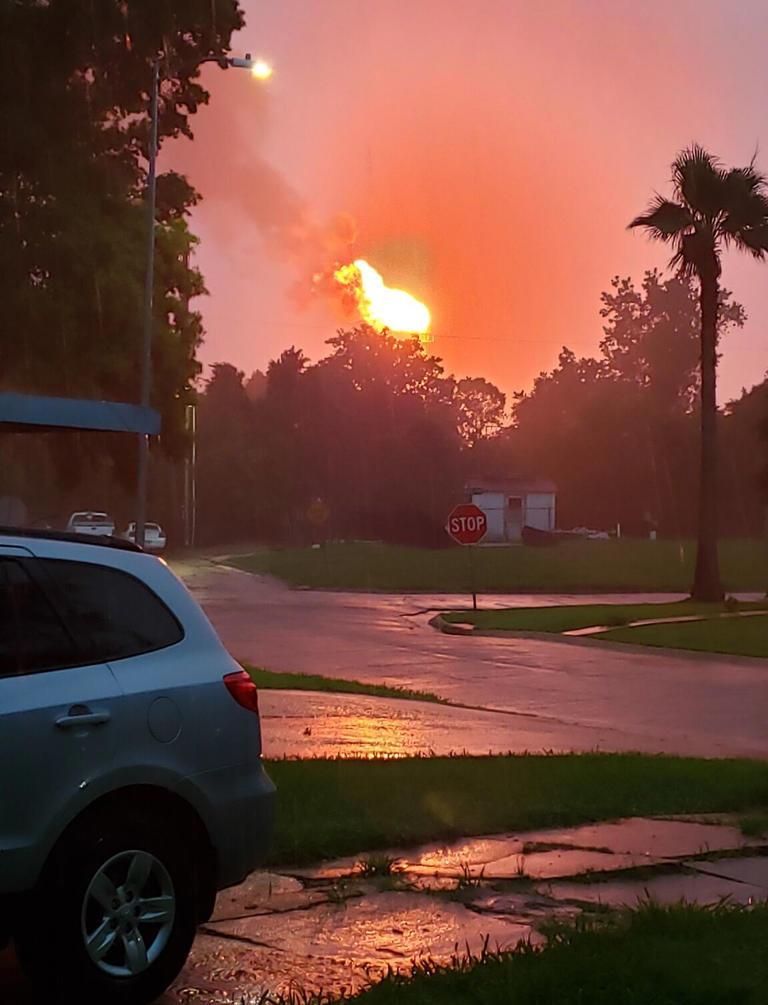
These facilities release millions of tons of pollution, including oil, gas and cancer-causing chemicals like benzene and vinyl chloride, into the environment every year, including into communities with deep roots in the region, from long before it became a petrochemical gauntlet.
Some of this pollution is allowed by law, but many facilities have a history of violations.
Extreme weather events — not only hurricanes but extreme cold, heat and high winds — can disrupt facility operations, causing more pollution.
During Harvey, 93% of the toxic air pollution released in Houston’s sprawling Harris County was emitted in a concentrated area within a four-mile radius of Manchester, a predominantly Hispanic neighborhood. That area encompasses several other communities of color, including places like Galena Park, which is predominantly Hispanic, and the historically Black enclave of Pleasantville.
A recent report from Amnesty International, using federal data, says life expectancy in communities near the Ship Channel is up to 20 years less than whiter, more affluent communities living in western Houston, about 15 miles away.
What’s in the water?
Galena Park is a small community of quiet homes and parks, where families live alongside 12 major industrial complexes. It was also the site of the largest chemical spill from Hurricane Harvey. A ruptured storage tank released 460,000 gallons of gasoline into the community — but the figure initially reported to state authorities was 90% lower.
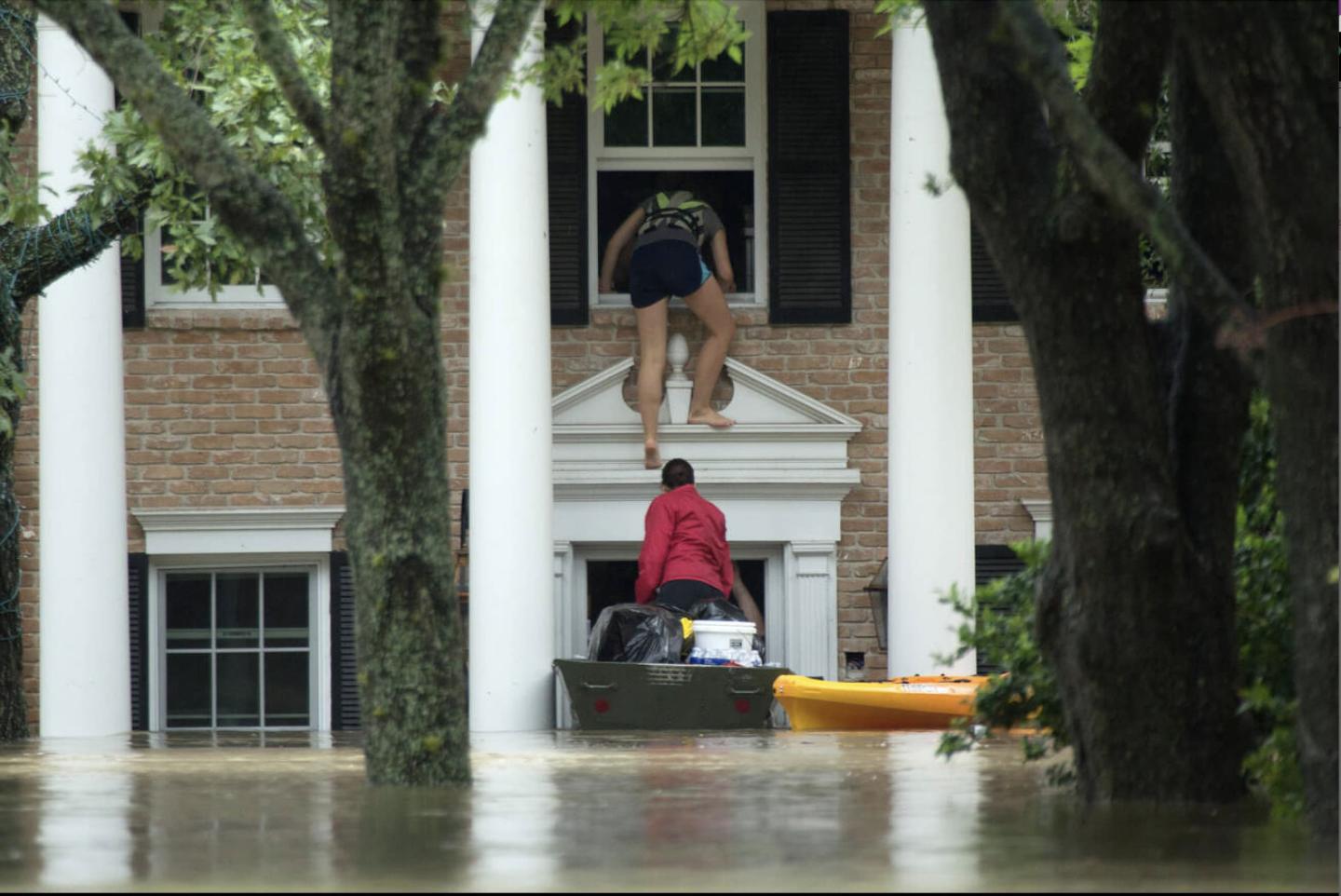
“People were complaining of the smell, and air monitoring showed us that they were breathing in high levels of benzene,” says Grace Tee Lewis, an Environmental Defense Fund health scientist. “I was on calls with the EPA and community groups who were demanding to know what was in the water surrounding their homes. Nobody had answers.”
The CDC, in its guidance on flood safety, notes that flood water can contain many things harmful to health: industrial chemicals, human and livestock waste, downed power lines — even snakes.
But specifics about which chemicals might be in the water, and where they travel, are not well known. To better understand what hazards they might pose to communities, researchers from EDF, The Galveston Bay Foundation and Texas A&M University launched a nearly four-year-long endeavor to examine toxic flooding in the Houston area.
Digging into a web of scattered public records, researchers mapped the locations of more than 1,000 petrochemical facilities and the types of chemicals they handled, as well their track record of pollution violations. Using a novel combination of models, they looked at both storm surge and heavy rainfall to track where floodwaters carrying toxic chemicals would travel. They then took a close look at communities on the coast and inland to understand which ones were vulnerable to toxic flooding, taking into account not just location but also the socioeconomic and environmental conditions that affect a community’s ability to prepare, endure and recover from these impacts.
“The typical approach is to think about one facility, one pollutant, one storm at a time, but in the real world, hazards are not independent or isolated,” says EDF scientist Lauren Padilla. “Communities have always known this, but science and government are just catching up.”
Natural solutions for flooding
Using this new framework, the research team identified a suite of natural solutions that could help keep potentially toxic flood waters out of vulnerable neighborhoods. Natural features, like trees and grassy channels, slow down and store floodwaters and filter out pollutants. Known as green infrastructure or nature-based solutions, they tend to be less expensive and more environmentally beneficial than traditional steel and concrete stormwater controls.
Texas A&M professor Galen Newman and his students designed a green infrastructure plan for Galena Park. With few large parcels of open space available in the neighborhood, the plan links compact features like vegetated ditches, tree boxes and curb cuts together to slow down, soak up and redirect stormwater. They also created an online guide to help communities identify which nature-based solutions would work best to control flooding in their neighborhoods.
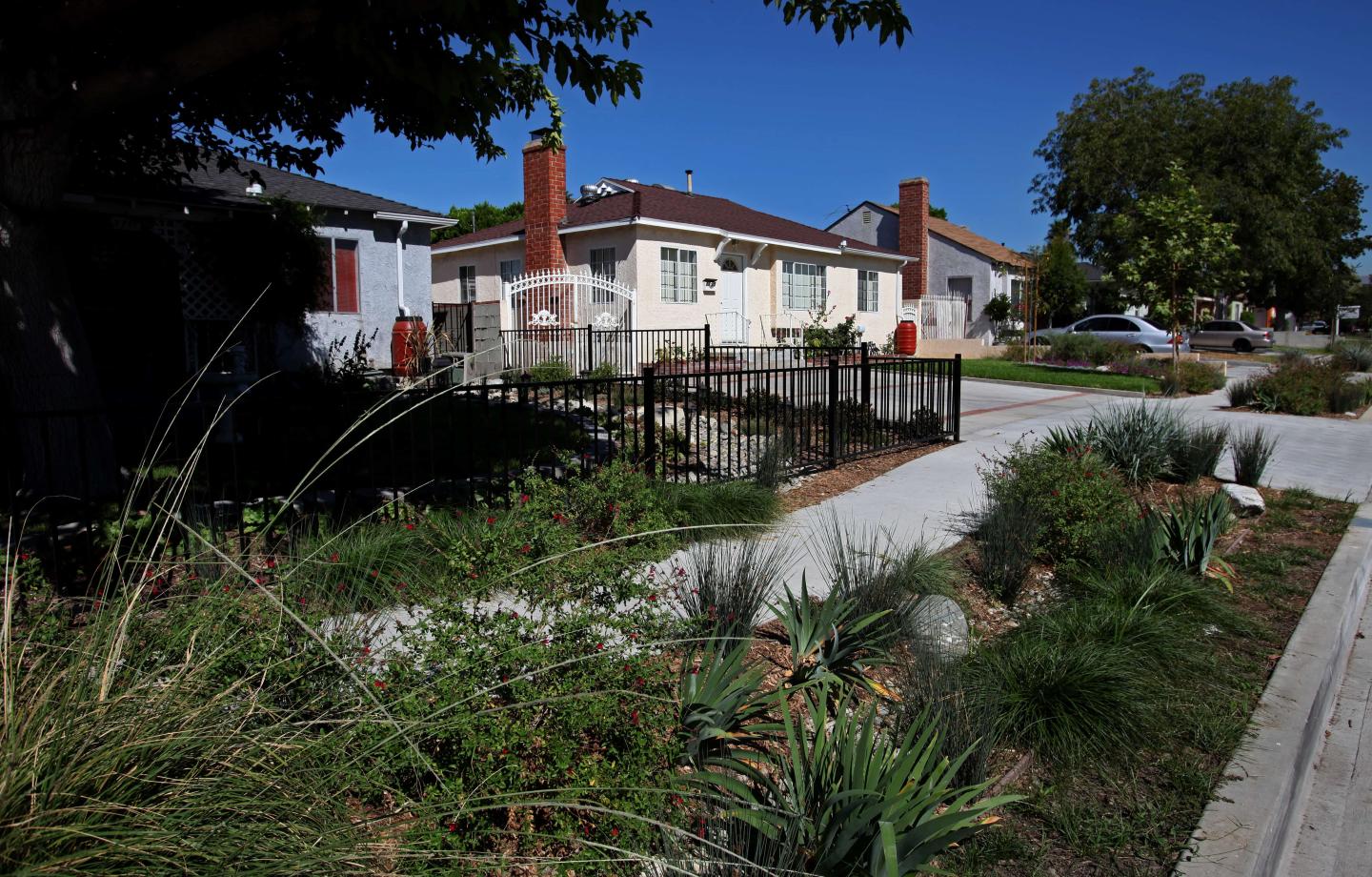
According to the flood models, a 30% increase in Galena Park’s green infrastructure features could reduce stormwater volume more than 14%, and pollution by 13%, each year. “That’s pretty good just for vegetation,” says Newman, who teaches urban planning and landscape architecture. “And as things grow, you expect it to get stronger.”
When researchers modeled certain hurricane conditions, the proposed natural solutions reduced stormwater volume 30% and the duration of the flood from 38 hours to 10 hours, reducing the risk of toxic chemical exposure.
Informed by the research, Galena Park recently won a $3 million federal grant to improve its water infrastructure, and plans to incorporate some of the proposed solutions.
Newman hopes that more communities will use the toolkit as they seek to improve flood protection. But both researchers and local residents caution that no single solution will deliver protection from a major hurricane, or undo the results of decades of environmental injustice. As a warmer, wetter climate fuels more frequent powerful storms, and the fossil fuel industry pivots to more petrochemical production, the need for solutions grows even more urgent.
“There is a huge community of people working on flood issues,” says Padilla. “My hope is that toxic flooding vulnerability becomes part of the dialogue, and that nature-based solutions are considered every step of the way. Green infrastructure is not going to solve everything on its own, but it can definitely make things better.”
